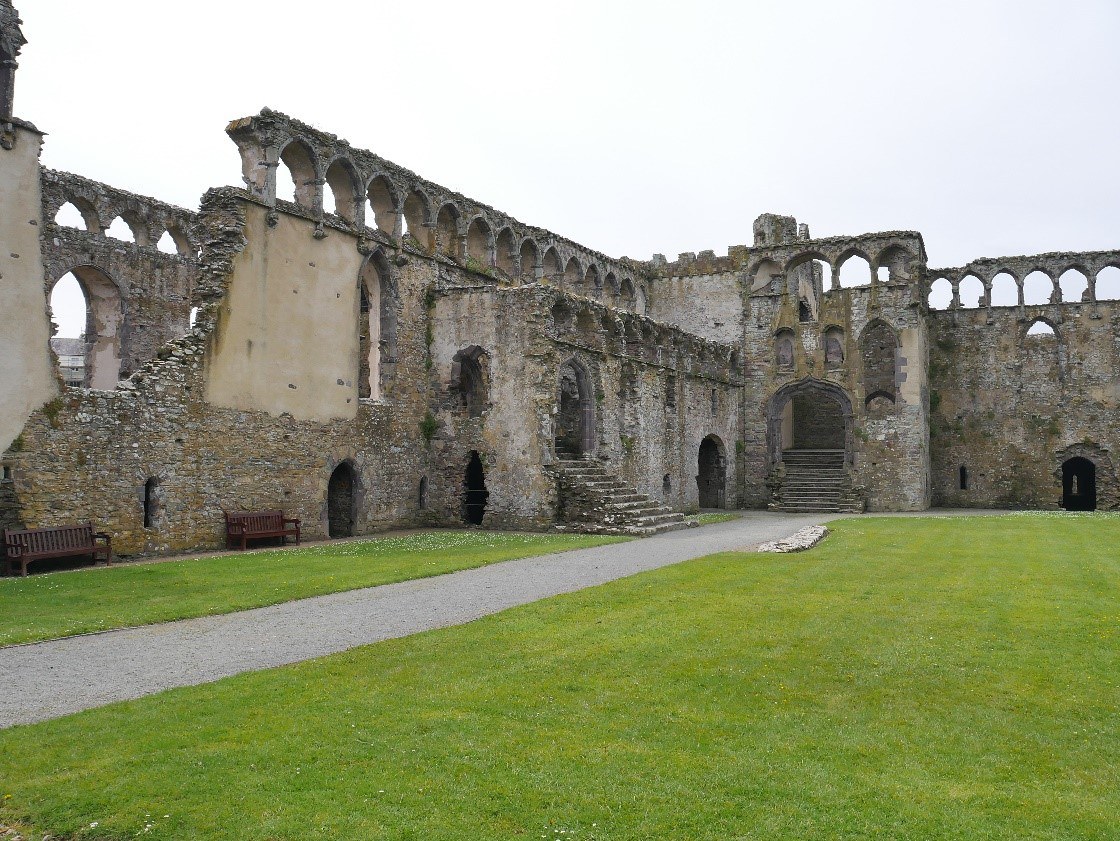St Davids Bishop's Palace
Chapter 2 : Layout
Between St David's cathedral and the palace complex, is a narrow stream, with a footbridge – this was once the site of the ‘llechllafar’ the ‘talking stone’. Ancient even in the days of Giraldus, the legend was that Merlin (born, according the old tales, at Carnarthen/Caerfyrddin, some forty-five miles to the east) prophesied that one day an English king, returning from a conquest of Ireland, would meet his death on the stone. In 1172, when Henry II made that very journey, warned of the danger, made suitable propitiatory prayers, to both the stone, and to St David, and escaped unscathed.
The palace is built as a square enclosing a courtyard, with the gatehouse in the centre of the north wall (near the current ticket office) with only the north flank of the bishop's private chapel abutting it. The west range is the oldest, and was probably the original service and stable blocks. The east range, with a projecting wing, contains the private apartments of the bishop, whilst the south range houses the public apartments, centred on a first floor Great Hall, with an impressive flight of stairs leading up to it. This Hall was probably the setting for both ecclesiastical courts and administration, as well as the secular administration pertaining to the bishops’ role as Marcher lords. At the west end of the south range is the public Great Chapel.
Originally, to go from the private apartments in the east range, to the public space in the south, the bishop would have had to go outside. A final refinement was the construction of a first floor passage between the two, it being customary for the first floor to be the level at which the nobility lived. Servants and retainers occupied the ground floor, where the kitchens, store-houses, brewhouse and bakehouse were situated. There were small staircases within the thickness of the walls for servants to transfer between floors to perform their tasks.

